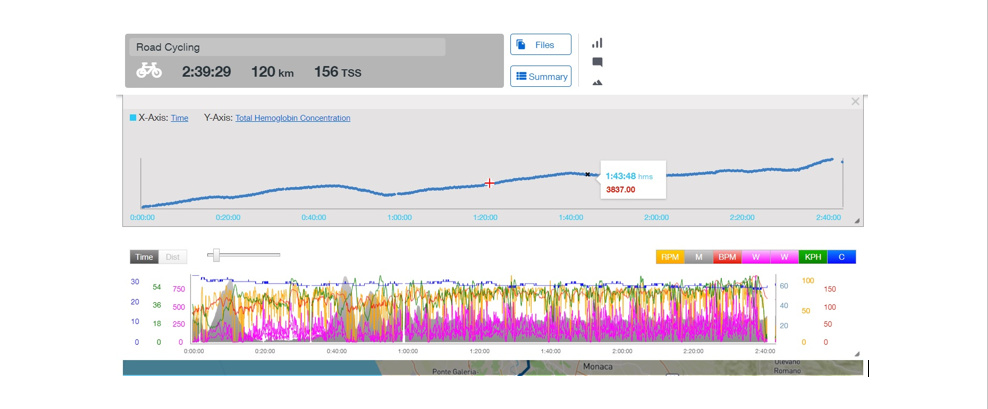Keeping it cool with CORE
With the recent Giro d’Italia still fresh in the memory, analysis of our riders’ performances is well under way.
For a rider, the Giro can be a whirlwind of challenges, ranging from legendary hard climbs, lightning-fast sprint finishes, two individual time trials, and this year even a day of racing on gravel. But what is never listed in the famous Garibaldi roadbook is the changes in weather conditions and the effects that this can have on riders.
Aside from the obvious effects of riding in changeable conditions is how riders manage the changes in their internal body temperature. Our riders have for some time been working with CORE to measure our riders’ core body temperature and analyse the effects that this has on their performance. The small device sits on the strap of a rider’s Gamin heart-rate strap, against the skin, and transmits data to their Garmin head units, which can be read in real-time during the ride, as well as analysed when they upload their data post ride.
Soudal Quick-Step coach Wim de Wolf explains: “The CORE is really useful in helping us to understand how some riders respond under certain conditions. It is natural to assume that this would be just down to weather conditions, but there is much more to it than that. We have noticed that intensity of effort can affect core temperature, as well as rise in core temperature affecting a rider’s state of fatigue and relative effort, as we can see in this graph from Luke Lamperti on stage 21 of the Giro d'Italia. Luke was an integral part of the train that led to Tim Merlier’s win, and as the stage drew to its conclusion and the intensity and speed went up, you can see that Luke’s core temperature was rising steadily.

We then use this information to calculate plans such as how we manage a rider’s workload, or their fueling and hydration strategy, making the CORE a very useful analysis tool.”
